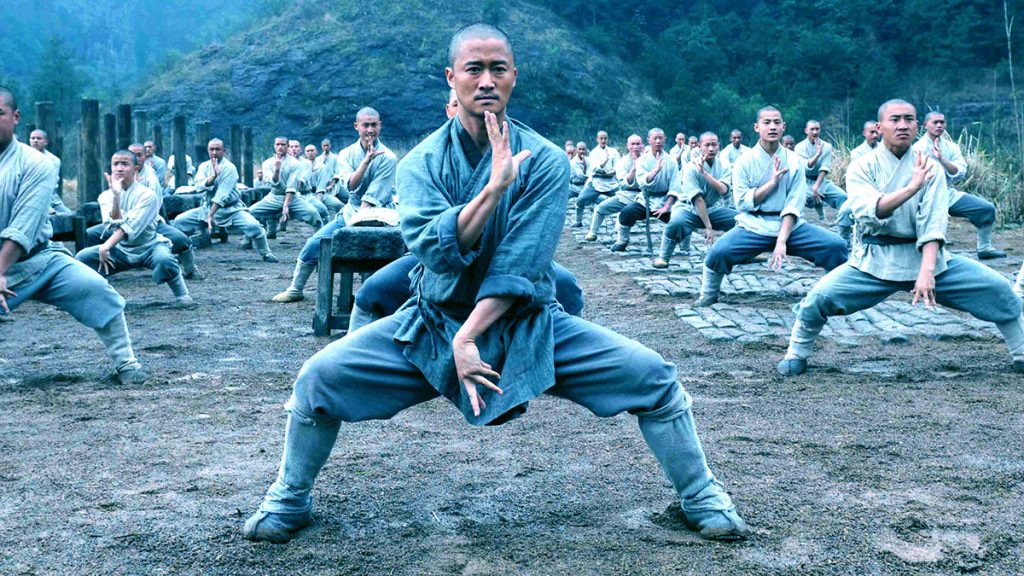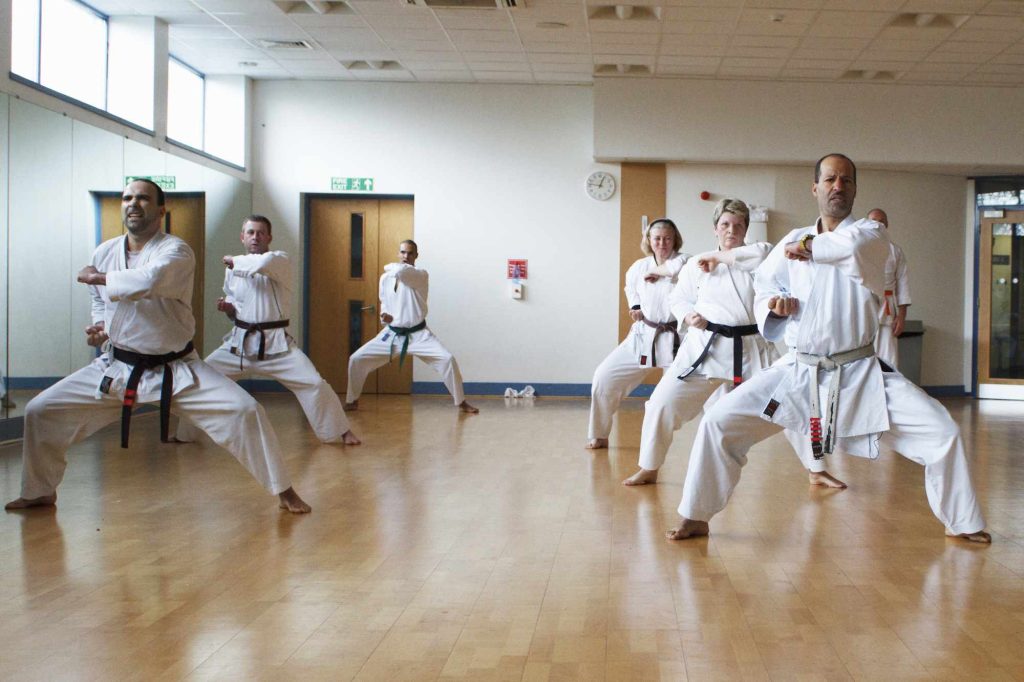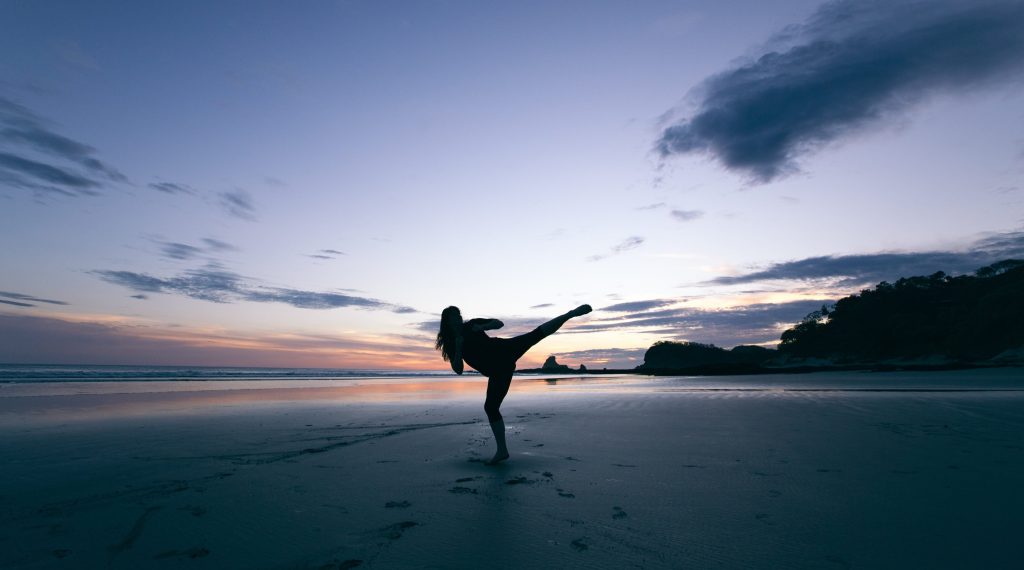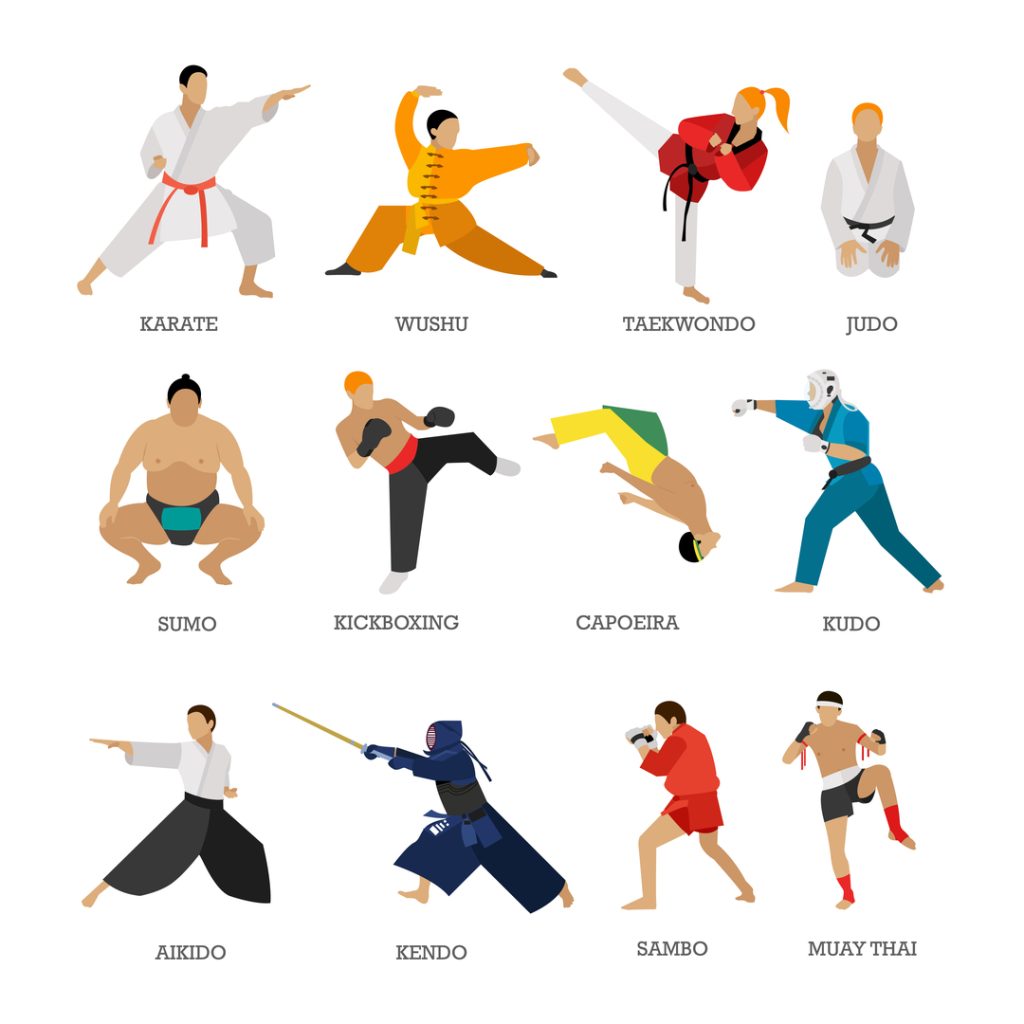Martial arts, traditionally revered for self-defense, have evolved into dynamic pathways for enhancing fitness and overall well-being. This exploration delves into the multifaceted world of martial arts, transcending their combative roots to spotlight their role in physical health, mental resilience, and community building. From the powerful kicks of Taekwondo to the graceful movements of Tai Chi, each style offers unique fitness benefits. This post aims to unveil how incorporating martial arts for fitness can lead to a healthier, more balanced lifestyle, regardless of age or fitness level.
Contents
- 1 The Physical Fitness Spectrum in Martial Arts
- 2 Mental and Emotional Benefits
- 3 Martial Arts for All Ages
- 4 Community and Social Aspects
- 5 Weight Management and Body Composition
- 6 Enhancing Coordination and Agility
- 7 Incorporating Martial Arts into a Fitness Routine
- 8 Choosing the Right Martial Art for Your Fitness Goals
- 9 Discover The Power of Martial Arts in Your Life
The Physical Fitness Spectrum in Martial Arts
Martial arts are not just about self-defense; they are a comprehensive workout, engaging multiple muscle groups and enhancing cardiovascular health. Practicing these disciplines regularly leads to improved strength, flexibility, and endurance. For instance, the high kicks and rapid movements in Taekwondo challenge the body’s flexibility, while the intense rounds in Muay Thai offer a vigorous cardiovascular workout. This holistic approach to fitness ensures that practitioners gain a well-rounded physical conditioning. Moreover, the variety in training routines in martial arts keeps the body constantly adapting and improving.
The physical benefits of martial arts extend beyond the visible muscle tone and stamina. Regular practice aids in developing core strength, crucial for overall body stability and injury prevention. Styles like Brazilian Jiu-Jitsu emphasize ground-based techniques, which require and thus enhance core strength. Additionally, the repetitive movements and drills in martial arts improve muscle memory and coordination. This not only contributes to better physical performance but also daily life activities, making movements more efficient and reducing the risk of falls and accidents.
Mental and Emotional Benefits
Engaging in martial arts is a journey that transcends physical boundaries, offering profound mental and emotional benefits. The discipline required in mastering martial arts techniques fosters a unique mental focus and resilience. This focus extends beyond the dojo, enhancing concentration and productivity in various aspects of life. Furthermore, the practice of martial arts instills a sense of calm and mindfulness, helping practitioners to manage stress and anxiety more effectively. The meditative aspects in styles like Tai Chi particularly emphasize mental tranquility and emotional balance.
The confidence boost gained from martial arts is another significant mental benefit. Learning and mastering new techniques provides a sense of accomplishment, which in turn enhances self-esteem and self-confidence. This newfound confidence can be transformative, impacting personal and professional life positively. Additionally, martial arts training often includes overcoming challenging situations and teaching valuable lessons in perseverance and resilience. These experiences equip practitioners with the mental fortitude to face life’s challenges with a more positive and determined mindset.
Martial Arts for All Ages
Martial arts are uniquely inclusive, offering benefits to practitioners across all age groups. For children, martial arts provide a fun and engaging way to develop discipline, respect, and physical fitness from an early age. The structured environment of martial arts classes helps in instilling good habits and a sense of responsibility. For adults, these disciplines offer an escape from the routine of daily life, a space to relieve stress, and a challenging way to stay fit. Additionally, martial arts can be an excellent way for adults to learn a new skill, providing a sense of achievement and continuous learning.
Seniors, too, can significantly benefit from martial arts. Styles like Tai Chi are particularly popular among older adults due to their low-impact nature and focus on balance and flexibility. These practices can help in maintaining mobility, reducing the risk of falls, and even managing chronic conditions like arthritis. The adaptability of martial arts ensures that they can be modified to suit individual needs and limitations, making them a safe and effective form of exercise for seniors. Moreover, the social aspect of attending classes can be a great way for older adults to stay connected and engaged with a community.
Community and Social Aspects
One of the most enriching aspects of martial arts is the sense of community and belonging it fosters. Joining a martial arts class introduces individuals to a diverse group of people, all united by a common interest. This environment is conducive to forming strong bonds and friendships as practitioners train, learn, and grow together. The mutual respect and camaraderie developed in the dojo often extend outside the training space, creating a supportive network. Furthermore, many martial arts schools and clubs organize events and competitions, offering additional opportunities for social interaction and community building.
The inclusive nature of martial arts also promotes a sense of belonging and acceptance. Regardless of age, gender, or background, everyone is welcomed and judged solely on their dedication and effort. This egalitarian approach encourages a diverse range of individuals to participate, enriching the learning experience for everyone. Additionally, the mentorship from experienced instructors and the encouragement from fellow classmates create a nurturing environment, especially beneficial for those who might feel isolated or disconnected in other areas of their lives. This aspect of martial arts goes beyond physical training, contributing significantly to emotional and social well-being.
Weight Management and Body Composition
Martial arts stand out as an effective tool for weight management and improving body composition. The high-intensity nature of many martial arts styles, such as kickboxing or karate, makes them excellent for burning calories and shedding excess weight. These activities combine aerobic and anaerobic exercises, ensuring a comprehensive workout that targets fat loss while building muscle. Unlike conventional gym routines that often focus on isolated muscle groups, martial arts engage the whole body, leading to more balanced and natural muscle development. Additionally, the dynamic movements and varied pace of martial arts workouts prevent the plateau effect often experienced in traditional fitness regimes.
Beyond just weight loss, martial arts contribute to a more toned and defined physique. The diverse range of movements in martial arts, from striking to grappling, works out different muscle groups, leading to a more harmonious body sculpting. This is particularly beneficial for those looking to enhance their overall body shape, not just lose weight. Moreover, the discipline and consistency required in martial arts training instill healthy lifestyle habits, which are crucial for long-term weight management. Regular practice transforms the body and encourages a more mindful approach to nutrition and health.
Enhancing Coordination and Agility
Martial arts training is renowned for its ability to enhance coordination and agility. The precise and controlled movements required in various martial arts disciplines demand a high level of body awareness and coordination. This is particularly evident in styles like Capoeira or Wushu, where practitioners execute complex movements with grace and precision. Regular training gradually improves neuromuscular coordination, allowing for smoother and more coordinated movement in both martial arts and everyday activities. This enhanced coordination also contributes to better balance and posture, reducing the risk of injuries.
Agility, the ability to move quickly and easily, is another key benefit of martial arts training. Fast-paced martial arts like boxing or Taekwondo require rapid movements and quick reflexes, training the body to be more agile and responsive. This agility is beneficial in a martial arts context and enhances performance in other sports and physical activities. Furthermore, improved agility has practical everyday benefits, such as better reaction times and the ability to navigate through physical spaces more efficiently. For individuals of all ages, the agility gained from martial arts can significantly improve overall physical capability and confidence.
Incorporating Martial Arts into a Fitness Routine
Incorporating martial arts into an existing fitness routine can rejuvenate and add a new dimension to your workout regimen. For those accustomed to weight training or cardio exercises, martial arts offer a refreshing change of pace and style. It introduces elements of flexibility, balance, and coordination, which might be less emphasized in conventional gym workouts. Integrating martial arts can also help overcome workout monotony, keeping the fitness journey exciting and challenging. Additionally, the structured progression in martial arts, with clear goals and levels, provides a motivational framework that can enhance overall fitness commitment.
When blending martial arts with other forms of exercise, balance is key. It’s essential to listen to your body and ensure a harmonious mix of cardiovascular training, strength building, and flexibility exercises. For instance, combining yoga or Pilates with a more intense martial art like Brazilian Jiu-Jitsu can create a well-rounded fitness program. This combination ensures that you are not overtraining certain muscle groups while neglecting others. Consulting with fitness professionals can also provide valuable insights into creating a balanced and effective fitness routine that incorporates martial arts.
Choosing the Right Martial Art for Your Fitness Goals
Selecting the right martial art to meet your fitness goals requires understanding the various styles and what they offer. If your primary goal is cardiovascular fitness, high-energy styles like kickboxing or Muay Thai might be ideal. These styles provide intense workouts that elevate heart rate and improve cardiovascular health. On the other hand, if flexibility and balance are your focus, arts like Aikido or Tai Chi offer more fluid and less impact-intensive training. Understanding your personal fitness goals and preferences is crucial in choosing a martial art that you will enjoy and stick with.
It’s also important to consider the practical aspects of practicing a martial art, such as class availability, location, and cultural elements of the discipline. Some might prefer the disciplined, traditional atmosphere of Karate or Judo, while others might thrive in the more free-form, creative environment of Capoeira. Trying out a few classes or speaking to instructors can provide valuable insights into what each style entails. Remember, the best martial art for you is one that aligns with your fitness goals, fits into your lifestyle, and, most importantly, keeps you engaged and motivated.
Discover The Power of Martial Arts in Your Life
Martial arts offer a rich tapestry of benefits that extend far beyond self-defense, encompassing physical fitness, mental well-being, and social engagement. Whether you seek to enhance your strength and agility or find a supportive community, there’s a martial art waiting for you. Embrace the opportunity to transform your fitness routine into an exciting, holistic journey. Take the first step today – find a local class, try different styles, and discover the profound impact martial arts can have on your life.










